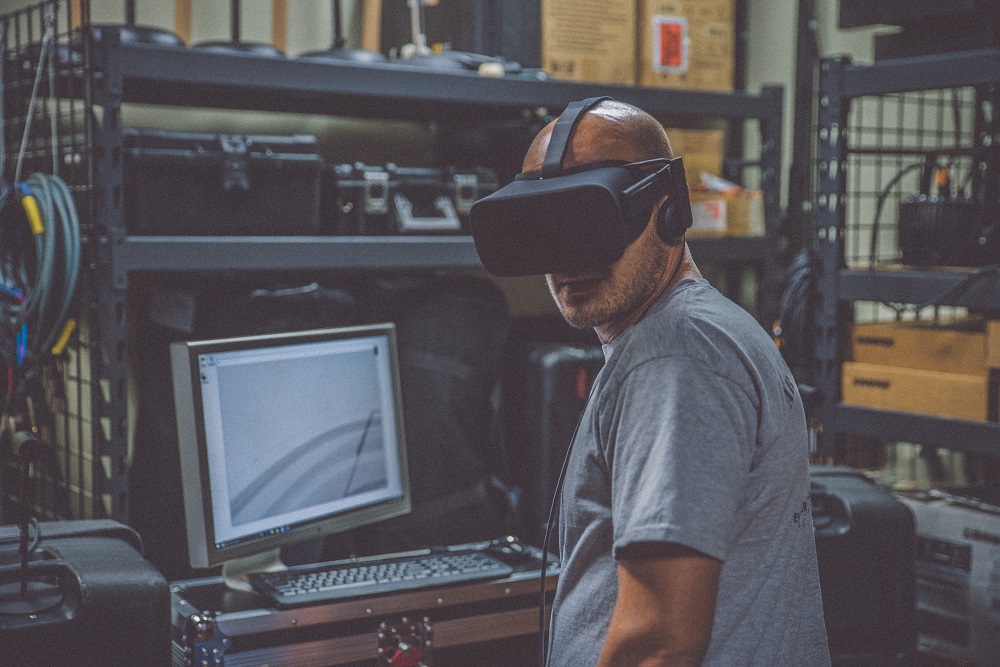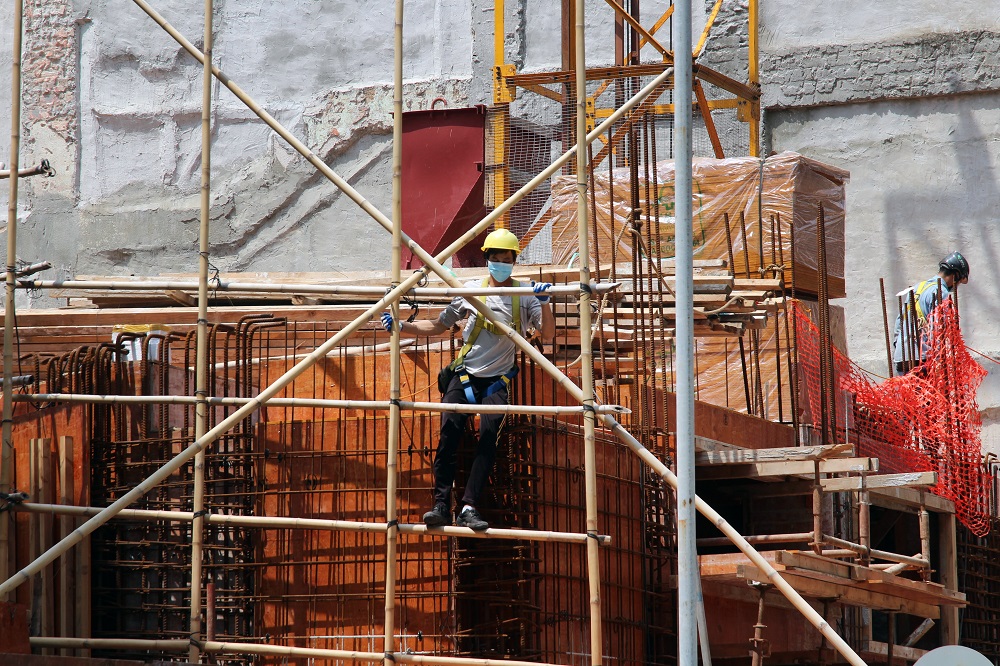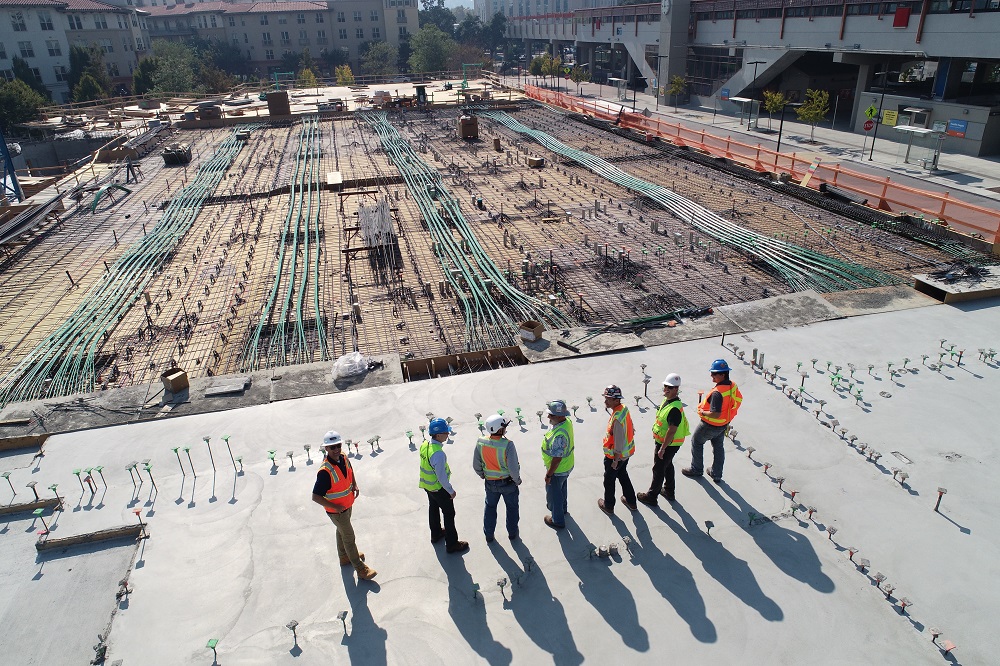Construction is one of the industries that don’t follow emerging innovative trends too quickly and enthusiastically but anyway it doesn’t ignore many of them to improve its state. At the same time, this field is sensitive to all global changes taking place in the world, which forces it to adopt many of the trends. So, let’s take a look at the challenges and trends construction is facing this year, and check out if it’s ready for them.
Innovative Technologies in Building: AR, VR, and 3D Printing

Though, as has been mentioned above, the construction industry lags behind other spheres in the adoption of innovation, there are still several modern trends that are successfully used or are planned to be implemented into the field this year.
Virtual and Augmented Reality in Construction: Customers’ Satisfaction, Workers’ Safety, and Better Project Management
Augmented and virtual reality are widely used in many industries, and lately have become quite popular with construction companies.
- They use VR to let their potential customers see the project and estimate it. With such an approach, companies can reduce unclaimed projects delivery.
- They can easily make adjustments and demonstrate them to stakeholders before implementing them.
- AR and VR help departments of building companies collaborate more efficiently, and therefore, project management becomes more convenient. This trend was used back in 2018 in the field of project management in construction, and still remains quite popular.
Read more: 2018 Project Management Trends in Construction
- AR makes it possible to automate measurements of buildings, which, in turn, allows to order the most optimal amount of necessary materials and assign the right number of workers for a project.
- These technologies help workers stay safe. AR and VR are nowadays used for safety training. These means are capable of modeling real-life situations through which workers can learn how to behave in a complex environment and in case of emergencies.
How 3D Printing Is Applied in Construction
Additive manufacturing in the field of building houses is not an innovative technology today as some countries have already adopted this technology for construction. Many of you have heard about a $140,000 3D printed house in China in 2016 and probably read the news about the popularity of this approach for constructing buildings in Dubai. But still today new trends and challenges arise in this field from time to time.
For instance, according to MarketsAndMarkets, the 3D concrete printing market will grow up to $56.4 million by 2021. Concrete 3D printing is gaining more and more recognition day by day but in general, this niche is still immature enough for industrial-scale production.
3D printing is a truly great approach to building as it has the following advantages:
- It requires fewer costs
- It’s less time consuming
- Less workforce needed
- Reduced carbon footprint
At the same time, despite its acceptance and demand, the global introduction of this technology is associated with some challenges and risks.
- First of all, it’s about hiring skilled workers capable of dealing with such a modern technology. Highly-qualified workers are anyway in demand in this field, and adopting new approaches will set up new requirements for the workforce that will probably be hardly met, and necessitates training the workforce of a corresponding level.
- Besides, this equipment, in spite of lower final production expenses, costs much and also requires additional service that needs both qualified staff and extra money.
- And finally, 3D printing technology is not completely approved means of building houses, so many things are to be done on the way to its total implementation in construction, which requires time, costs, and efforts.
Sustainability in Construction: Green Building Trends

According to 2019 Global Status Report for Buildings and Construction, the industry is responsible for 40% of all CO2 emissions, which is really even more than that in the transportation field. Reducing the carbon footprint is not a unique trend for construction companies, and is not a 2020 trend, either. But due to climate change, most corporations do their best to ensure eco trends in their production this year, and construction is no different.
There’s a worldwide certification program called LEED (Leadership in Energy and Environmental Design) that sets up standards for improving construction processes to make them more environmentally friendly.
Modular Construction and Prefabrication
According to MarketsAndMarkets, the modular construction market is predicted to grow its rate annually by 6.9 percent, which will make up $157 billion in 2023. The reasons for such growth are quite obvious:
- the construction industry is facing difficulties associated with the lack of the workforce
- it tends to decrease project time and costs
- it strives to be more ecological.
The modular construction is a great means to succeed in this direction as much fewer energy is used during production, and besides, modular buildings can be recycled, as well as extra materials that haven’t been used for construction. It’s most widely applied in healthcare, HoReCa, and residence housing.
The main difference between traditional construction and prefabrication is that the latter is a method that presupposes not only producing parts of buildings or its materials at a special place, not at the site itself, but also recycling redundant materials, which is more ecological. Besides, it also reduces the lead time, costs, and resolves the problem with the workforce shortage.
Building Information Modelling
BIM is a means that ensures a decrease in construction projects costs and at the same time the increase of sustainability in this area. It’s pretty closely associated with AR and VR approaches as it can give a clear idea of the would-be project. This, in turn, can reduce the production of extra materials and costs, which saves both resources and the environment, as stakeholders can clearly see and assess the future project including the number of necessary materials. It’s a 3D model technology providing AEC with all important information about the project throughout its lifecycle.
Changes in Construction Industry Due to COVID-19

Coronavirus pandemic has affected all spheres of human activity to a bigger or lesser extent, and construction is of no exception. So what effect has COVID-19 brought into the field?
Construction Factories Closed and Projects Delayed
The pandemic has negatively affected most of construction projects worldwide, though the construction industry is less hurt as compared to other fields where people primarily work in enclosed environments and are more prone to infection. Of course, it depends on the type of project and its stage, but in most cases, employees work outside. On the other hand, despite this fact, many sites are closed due to coronavirus all over the world.
USA and Canada
In the US, according to the survey conducted by Associated General Contractors of America (AGC), more than ⅔ of firms who have participated in the survey have been facing project delays and disruptions due to the lack of personal defense facilities, such as safety visors.
As stated by Associated Builders and Contractors (ABC), the non-residential construction field lost 10,700 jobs by the end of March 2020. And according to the National Association of Home Builders (NAHB), residential construction has been failing within the quarantine period as more than 4,300 homebuilders have lost their jobs because of the pandemic. Specialists expect to see even worse results in April reports.
On the other hand, the quarantine has significantly reduced traffic jams which has improved some areas of construction – eased delivery.
Canadian authorities have made a decision to extend working hours for essential construction to decrease the number of people working at the same time by varying their shifts. This is going to help reduce the spread of the disease. In turn, essential construction implies building hospitals and health-check centers, as stated by the Canadian Construction Association (CCA).
Europe and Asia
In Italy, the construction industry is going to fall by more than 23%, as stated by CRESME. Similar to the US, Italian construction companies have halted their activities for the whole quarantine period because of the lack of personal protective equipment.
Japanese biggest construction firms have also warned about laying off all kinds of work till May.
Meanwhile, in Spain worksites renewed their activities after quarantine restriction smoothing since the end of March. Though it refers only to essential work connected with cities’ infrastructure.
Looking back at 2020 plans for digitalization in the construction industry, everyone realizes that many things are apparently postponed for better times. Now one of the main things is to provide people with jobs in the field, to resume the interrupted projects and finish the delayed ones. If you’re engaged in building and are going to address these pandemic-rehabilitation challenges, dwell upon implementing an efficient multi-project management software solution that will help your projects recover from this long illness. Book a demo today and learn how Epicflow will do that for you.


